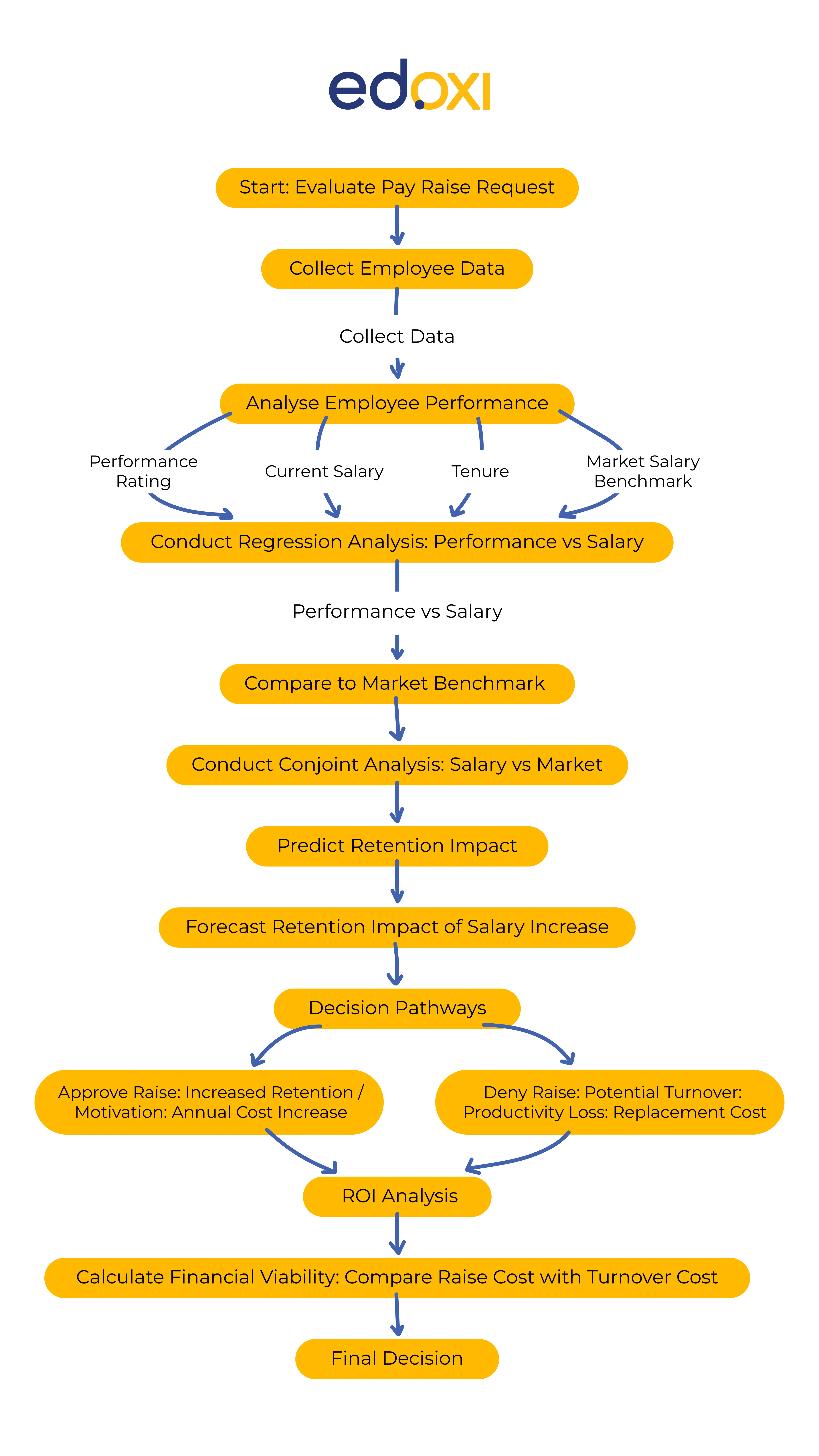 Shabana Barshaj
Jul 26, 2024
Shabana Barshaj
Jul 26, 2024

Leveraging HR Analytics in Decision-Making can provide data-driven insights that ensure fairness and transparency.
As a Human Resource professional, you can make more informed decisions about salary adjustments by analysing employee performance metrics, market salary data, and organisation budgets. This approach helps you in identifying high performers and aligning compensation strategies with business goals.
In this blog, I will explain to you how HR analytics can guide decision-making processes, particularly in scenarios such as evaluating employee pay raise requests. We will also explore the methodologies and tools that HR professionals (you) can use to make evidence-based decisions that align with organisational goals.
Also Read: Top HR Certifications for Career Growth
HR analytics, also known as people analytics, is the process of gathering, examining, and presenting HR data to improve business operations. It helps companies make well-informed choices, cut expenses, and streamline procedures while adhering to legal regulations.
HR analytics can improve a range of internal operations, such as payroll, benefits, recruitment, orientation, performance evaluation, and employee satisfaction. Generative AI is still in the experimental phase.
Check out: How to become a Successful HR professional
Let's consider a scenario where an employee requests a pay raise. Here’s how HR analytics can assist in making an informed decision:

Let's put the above concepts into practice with a simplified example.
This analysis ensures that the decision to approve the pay raise is aligned with both employee satisfaction and organisational goals.
HR analytics provides a solid framework for making data-informed decisions about employee compensation. By using performance analysis, market comparisons, predictive modeling, and return on investment (ROI) analysis, HR professionals can make fair and strategic choices. This approach helps retain top talent and ensures that HR strategies are aligned with the broader goals of the business.
By integrating HR analytics into decision-making processes, organisations in the UAE can optimise their talent management strategies and ensure a motivated and productive workforce. For more insights on how to leverage HR analytics for your organisation, consider enrolling in HR courses offered by Edoxi Training Institute.
You might also be interested: Power of HR Analytics in the UAE

HR Trainer
Shabana Barshaj is a passionate and versatile HR trainer specializing in communication and soft skills development, with over a decade of experience in the UAE's training landscape. HR Analytics, KPI, Performance Management, Recruitment and Talent Acquisition are her areas of expertise. Her ability to bridge the gap between technology and soft skills makes her a valuable asset. She also conducts training workshops on MS Office Suite applications time management and stress management.